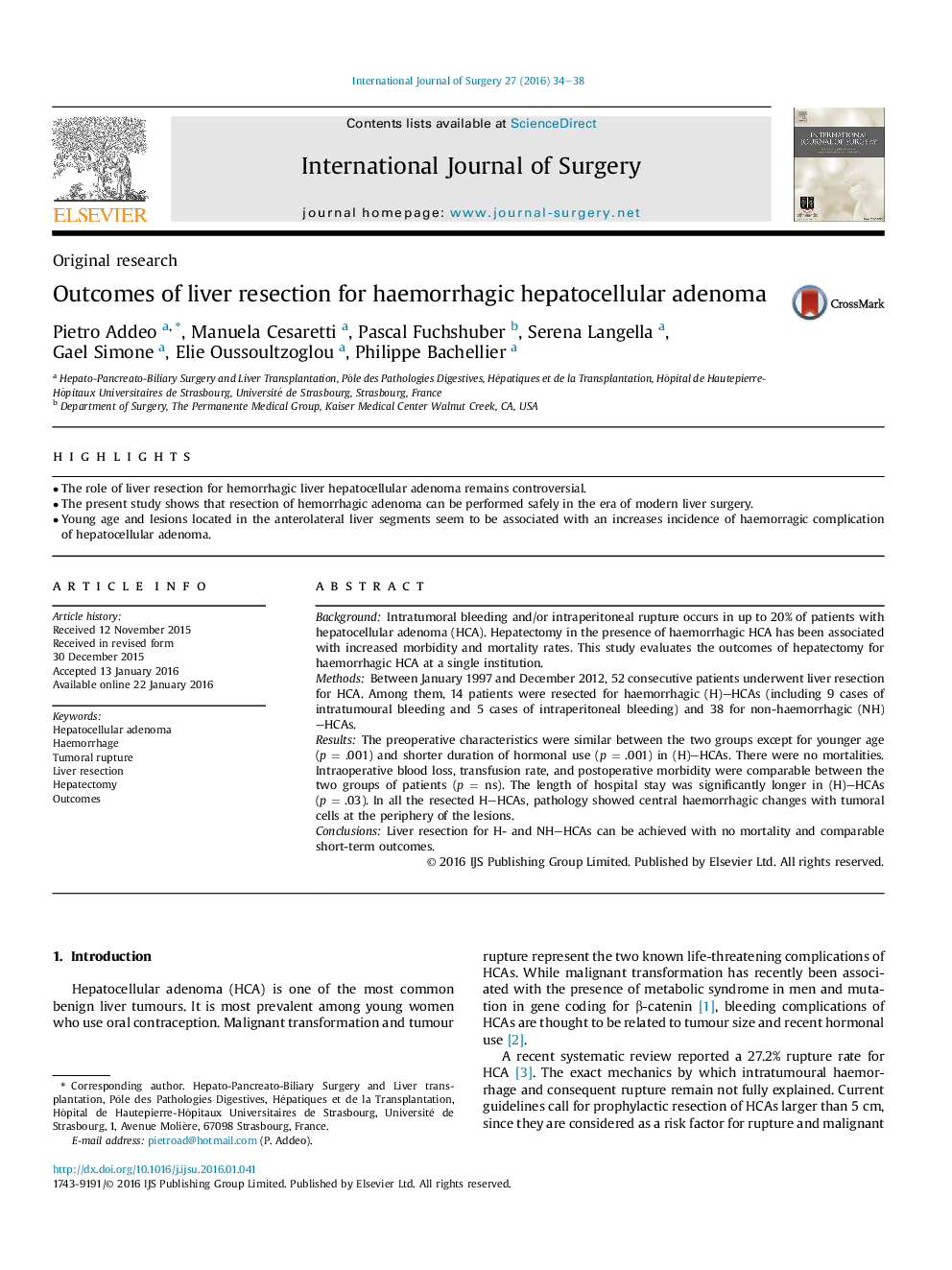| Article ID | Journal | Published Year | Pages | File Type |
|---|---|---|---|---|
| 4285496 | International Journal of Surgery | 2016 | 5 Pages |
•The role of liver resection for hemorrhagic liver hepatocellular adenoma remains controversial.•The present study shows that resection of hemorrhagic adenoma can be performed safely in the era of modern liver surgery.•Young age and lesions located in the anterolateral liver segments seem to be associated with an increases incidence of haemorragic complication of hepatocellular adenoma.
BackgroundIntratumoral bleeding and/or intraperitoneal rupture occurs in up to 20% of patients with hepatocellular adenoma (HCA). Hepatectomy in the presence of haemorrhagic HCA has been associated with increased morbidity and mortality rates. This study evaluates the outcomes of hepatectomy for haemorrhagic HCA at a single institution.MethodsBetween January 1997 and December 2012, 52 consecutive patients underwent liver resection for HCA. Among them, 14 patients were resected for haemorrhagic (H)–HCAs (including 9 cases of intratumoural bleeding and 5 cases of intraperitoneal bleeding) and 38 for non-haemorrhagic (NH)–HCAs.ResultsThe preoperative characteristics were similar between the two groups except for younger age (p = .001) and shorter duration of hormonal use (p = .001) in (H)–HCAs. There were no mortalities. Intraoperative blood loss, transfusion rate, and postoperative morbidity were comparable between the two groups of patients (p = ns). The length of hospital stay was significantly longer in (H)–HCAs (p = .03). In all the resected H–HCAs, pathology showed central haemorrhagic changes with tumoral cells at the periphery of the lesions.ConclusionsLiver resection for H- and NH–HCAs can be achieved with no mortality and comparable short-term outcomes.
